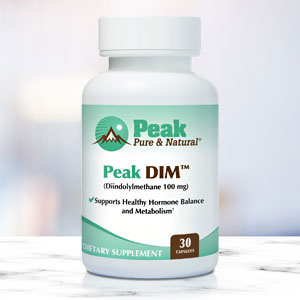Get Easy Health Digest™ in your inbox and don’t miss a thing when you subscribe today. Plus, get the free bonus report, Mother Nature’s Tips, Tricks and Remedies for Cholesterol, Blood Pressure & Blood Sugar as my way of saying welcome to the community!
Thyroid, menopause and diabetes: The phthalate danger to women

Phthalates are colorless and odorless chemicals. They’re used in the manufacture of plastics, solvents and personal care products. Their so widespread they’ve gained the nickname “everywhere chemicals.”
Because they do not bind chemically to the material they’re added to, so they’re oh-so-easily absorbed through the skin and into the bloodstream.
Phthalates, like several other synthetic chemicals, are endocrine-disrupting chemicals (EDCs).
That means they disrupt the workings of the hormones that control pretty much every function in your body.
And because of the intimate nature of many of the personal care products these chemicals are used in, women are especially hard hit…
Studies have shown that women with high levels of phthalates experience menopause earlier than women with lower levels. Early menopause increases a woman’s risk for cognitive decline and all-cause mortality.
Studies have shown they also interfere with the production of thyroid hormones. A urine analysis of 1,660 study participants found the higher the phthalate levels in the body, the lower their thyroid levels.
But the phthalate assault on women doesn’t end there…
Phthalates raise women’s risk of type 2 diabetes
Research published in the Journal of Clinical Endocrinology and Metabolism shows that the phthalates found in shampoo and makeup can dramatically raise a woman’s risk of developing type 2 diabetes.
In the study conducted by scientists at the University of Michigan School of Public Health, about 1300 women without diabetes were followed for a period of six years.
During that time, periodic urine samples were taken that measured the amount of phthalate metabolites present.
Women with higher levels of phthalates in their urine were up to 63 percent more likely to develop diabetes.
How to cut down on phthalate exposure
Fortunately, some manufacturers of personal care products realize the dangers of phthalate exposure.
I began using phthalate-free shampoo and conditioner as soon as they hit the market. And now they are easy to find in most stores.
The Environmental Working Group’s Skin Deep Skin Deep® cosmetics database and Guide to Healthy Cleaning are also great sources to find personal care and cleaning products that are free from phthalates and undisclosed fragrances, as well as other harmful chemicals.
But, because phthalates are everywhere chemicals, please follow these other tips to minimize your exposure:
- Never heat food in plastic containers.
- Avoid processed foods whenever possible.
- Eat organic meat, especially organic chicken. Researchers have found evidence of phthalates in the meat of non-organic chickens that they believe originally came from the chicken feed fed to these animals.
- Do not use plastic cups when you drink hot beverages.
- If you use sanitary napkins or pads, look for phthalate-free brands.
Editor’s note: Are you feeling unusually tired? You may think this is normal aging, but the problem could be your master hormone. When it’s not working, your risk of age-related diseases skyrockets. To reset what many call “the trigger for all disease” and live better, longer, click here to discover The Insulin Factor: How to Repair Your Body’s Master Controller and Conquer Chronic Disease!
Sources:
Chemicals found in shampoo shown to raise women’s risk of diabetes by two thirds – study — express.co.uk
Phthalates and Incident Diabetes in Midlife Women: The Study of Women’s Health Across the Nation (SWAN) — Journal of Clinical Endocrinology and Metabolism
Pthalates: the everywhere chemical — National Institutes of Health
Phthalates may increase diabetes risk in women, but which women and why? — Medical News Today














